Tokyo Tower
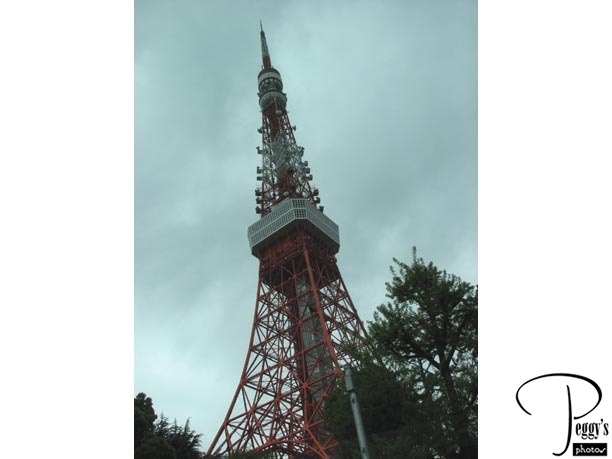
I received an e–mail this morning from Viator.com, the Internet company I had booked my tours with, that my tour today to the fish market and the Edo Tokyo Museum had been canceled for lack of participants. However, I wasn’t called my Sunrise Tours about the cancellation. I had given them my hotel name but I didn’t have a cell phone with me––I thought they would have called my hotel. The reason for being without a cell phone is because, even though I have a global service with my European prepaid phone, including service in Japan, I do not have a G3 phone––such as the i–Phone. Only G3 phones will work in Japan (the G3 network is faster than the old networks). Luckily it was today that my tour was canceled––other people were being picked up by Sunrise Tours from my hotel and I was able to book another tour (I couldn’t get past the busy signals at the tour company to rebook over the phone). If it was tomorrow, it would have been different as both Earthlink was down and no one else was being picked up at my hotel. Anyway, I was rebooked on the Dynamic Tokyo Tour. It was probably a better tour than the one that was canceled. Our first stop: Tokyo Tower. Tokyo Tower was completed in 1958 and is 1,092 feet (333 meters) tall, which makes it slightly taller than the Eiffel Tower. A new Tokyo Tower is to be built which will be twice the size of this tower.

Tokyo Tower
Tokyo Tower
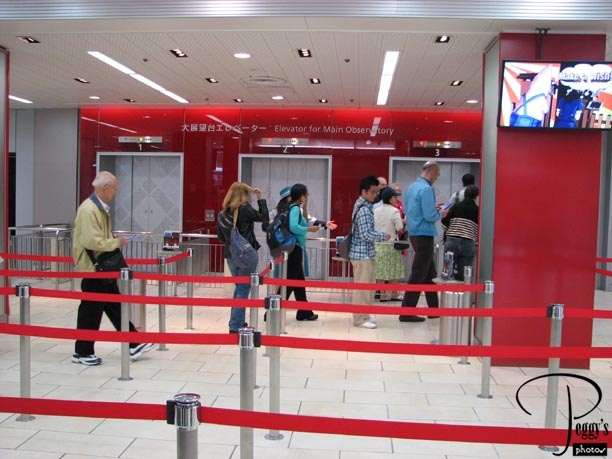
Heading toward the elevators to the observation deck at Tokyo Tower.

Tokyo Tower
Tokyo Tower
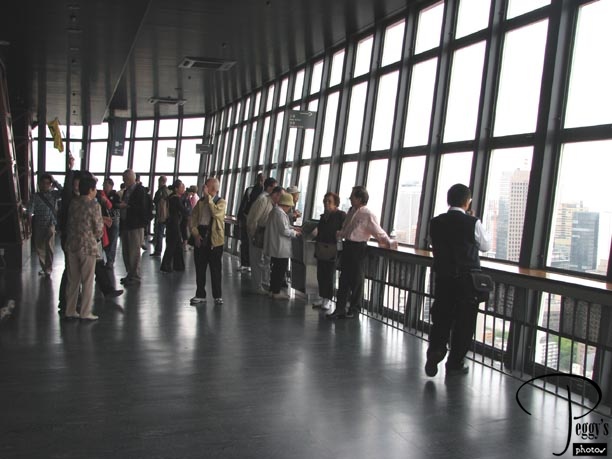
The main observation deck at 492 feet (150 meters) high. There is another observation deck at 820 feet (250 meters) high. I have been up other towers (as long as they have elevators, I go up them), but this one felt different. There was absolutely no fear of being in a high place, no nervousness of falling down.

Tokyo Tower
Tokyo Tower
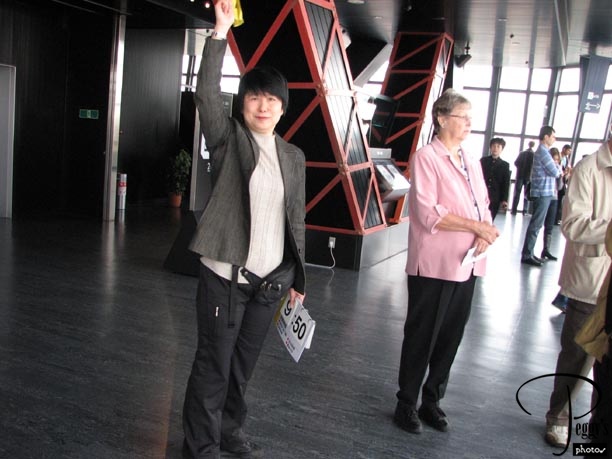
Our guide, nicknamed Kay. She had a really good sense of humor. I have put the photos that I took from the observation deck on a slide show on this website: Go to Slide Shows, Japan, “Tokyo: Views from Tokyo Tower.” You’ll see that Tokyo is a city of thousands of high rises and skyscrapers––in every direction.

Tokyo Tower
Tokyo Tower
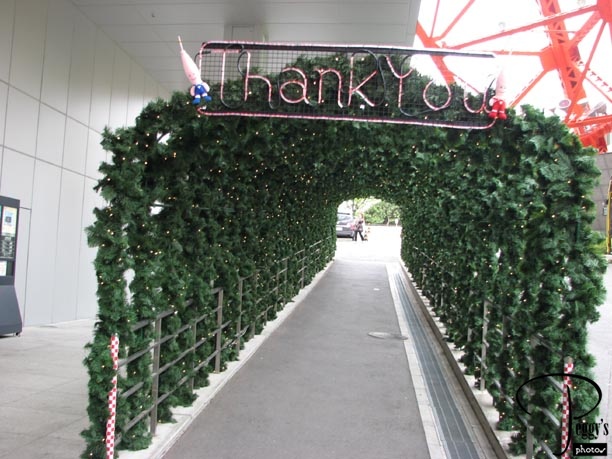
They even thanked us for coming.

Tokyo Tower
Diet Building
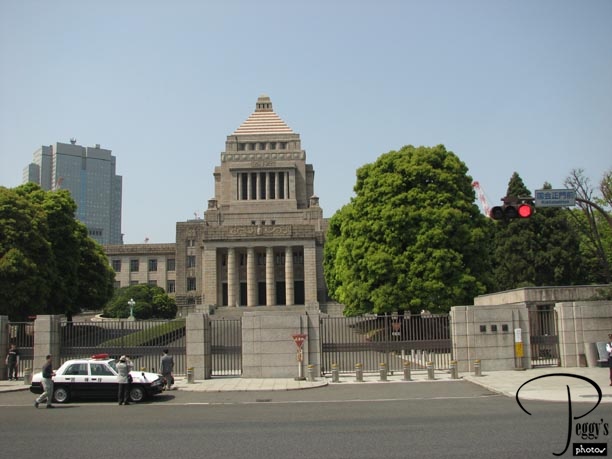
On our drive to our next stop, we passed the Japanese legislature building, called the Diet (pronounced just as it is spelled).

Diet Building
Japanese Garden and Tea Ceremony
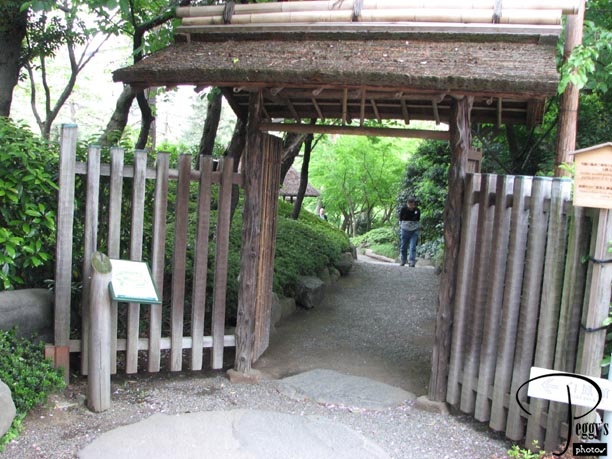
We next went to the Japanese Garden for a Japanese tea ceremony. Photo: Entrance to the garden.

Japanese Garden and Tea Ceremony
Japanese Garden and Tea Ceremony
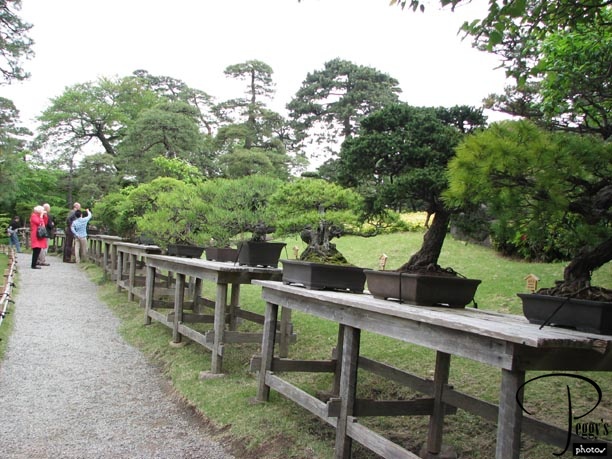
Bonsai trees lined up on our way to the tea house.

Japanese Garden and Tea Ceremony
Japanese Garden and Tea Ceremony
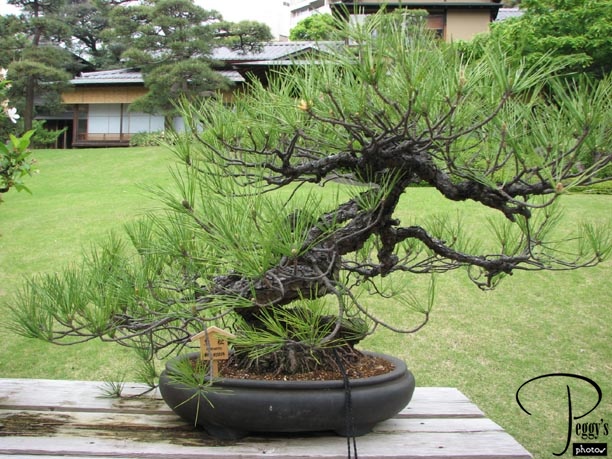
A bonsai tree.

Japanese Garden and Tea Ceremony
Japanese Garden and Tea Ceremony
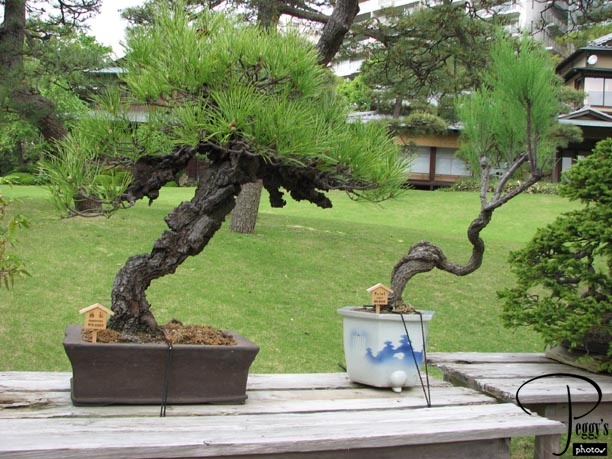
Two bonsai trees.

Japanese Garden and Tea Ceremony
Japanese Garden and Tea Ceremony
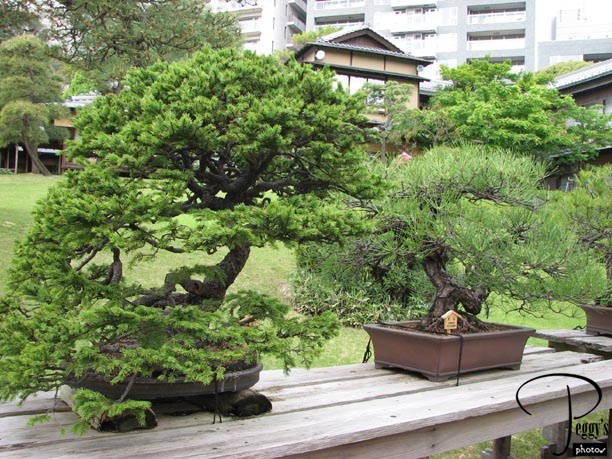
More bonsai trees.

Japanese Garden and Tea Ceremony
Japanese Garden and Tea Ceremony
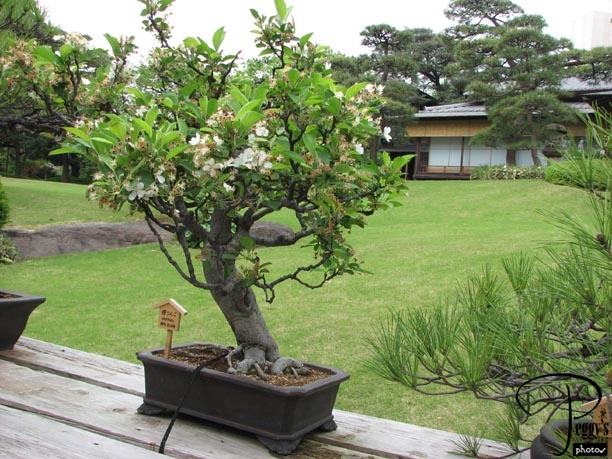
An another.

Japanese Garden and Tea Ceremony
The Bird’s Nest Olympic Stadium

Inside the stadium.

The Bird’s Nest Olympic Stadium
Japanese Garden and Tea Ceremony
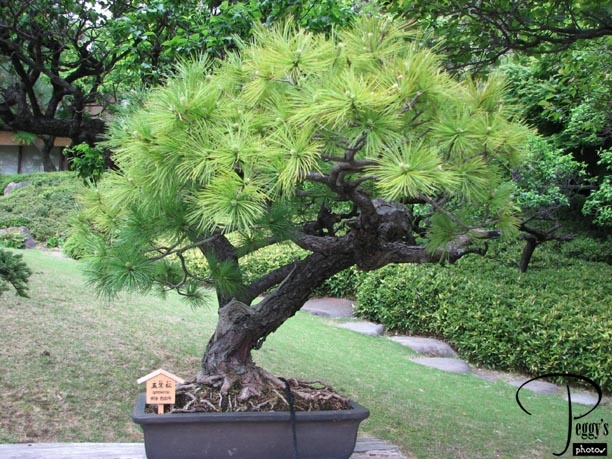
And one more.

Japanese Garden and Tea Ceremony
Japanese Garden and Tea Ceremony
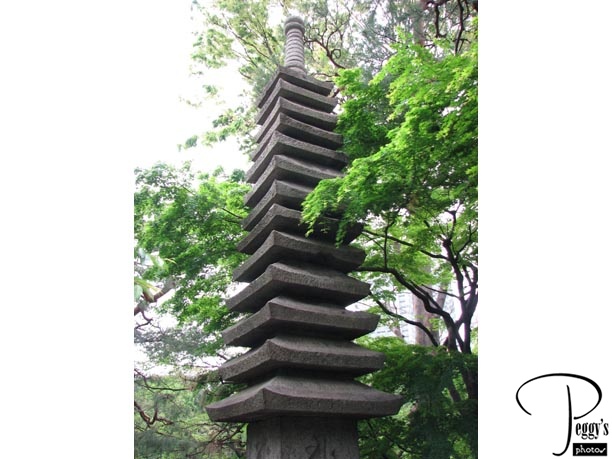
A cement pagoda in the garden.

Japanese Garden and Tea Ceremony
Japanese Garden and Tea Ceremony
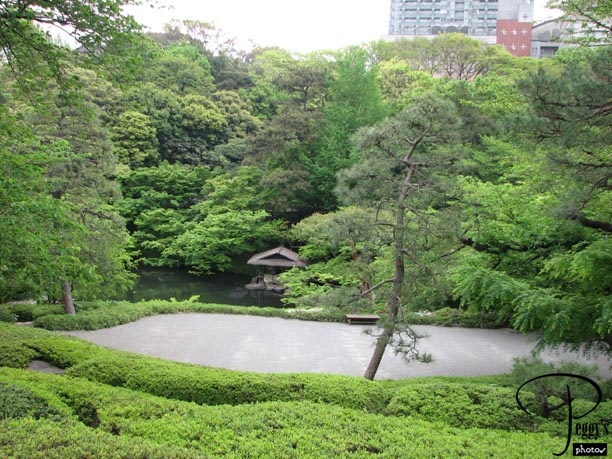
The Japanese Garden was beautiful.

Japanese Garden and Tea Ceremony
Japanese Garden and Tea Ceremony

The Japanese Garden.

Japanese Garden and Tea Ceremony
Japanese Garden and Tea Ceremony
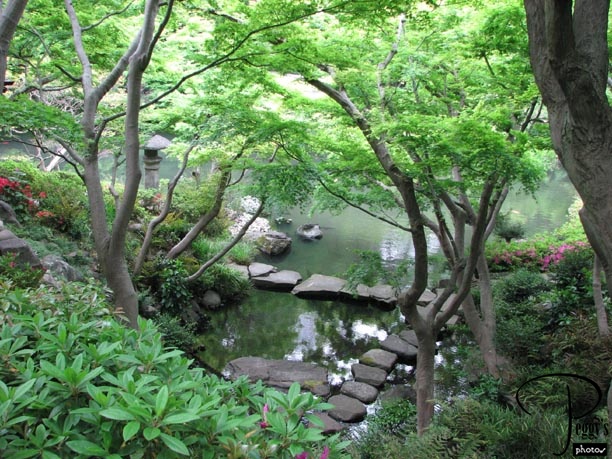
The Japanese Garden.

Japanese Garden and Tea Ceremony
Japanese Garden and Tea Ceremony

The Japanese Garden.

Japanese Garden and Tea Ceremony
Japanese Garden and Tea Ceremony
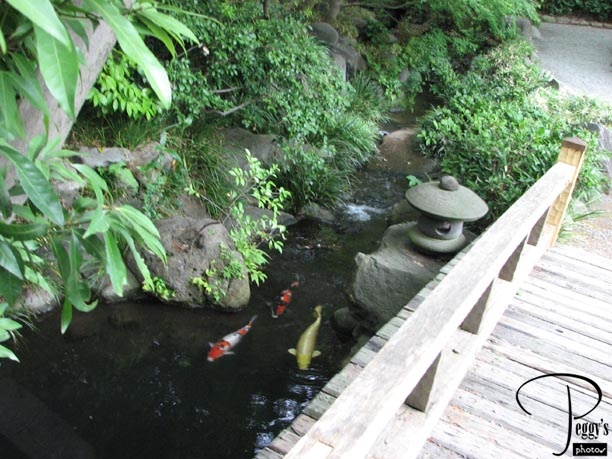
The Japanese Garden.

Japanese Garden and Tea Ceremony
Japanese Garden and Tea Ceremony
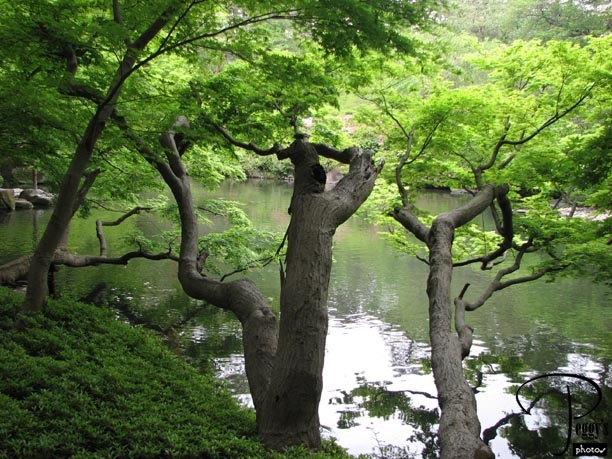
The Japanese Garden.

Japanese Garden and Tea Ceremony
Japanese Garden and Tea Ceremony
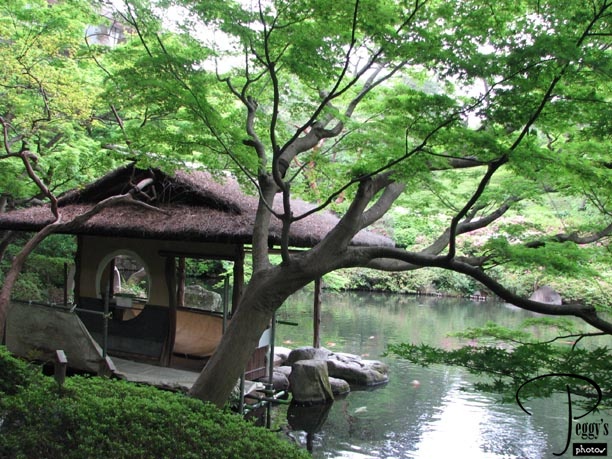
The Japanese Garden.

Japanese Garden and Tea Ceremony
Japanese Garden and Tea Ceremony
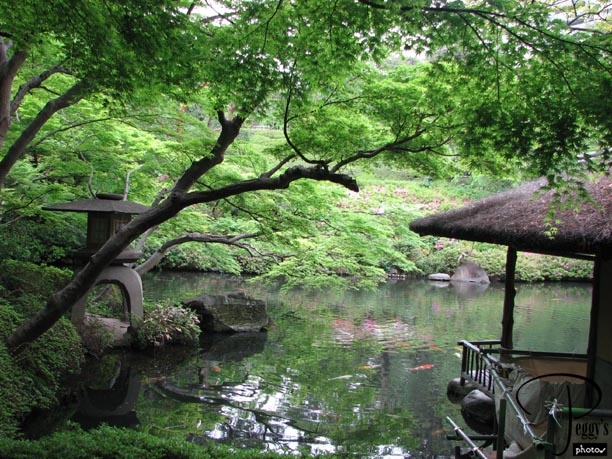
The Japanese Garden.

Japanese Garden and Tea Ceremony
Japanese Garden and Tea Ceremony
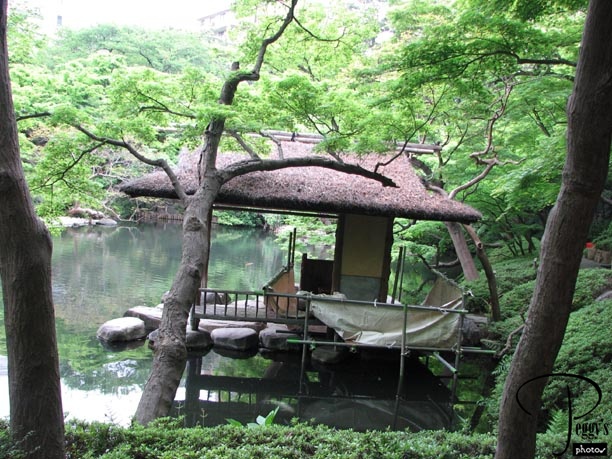
The Japanese Garden.

Japanese Garden and Tea Ceremony
Japanese Garden and Tea Ceremony
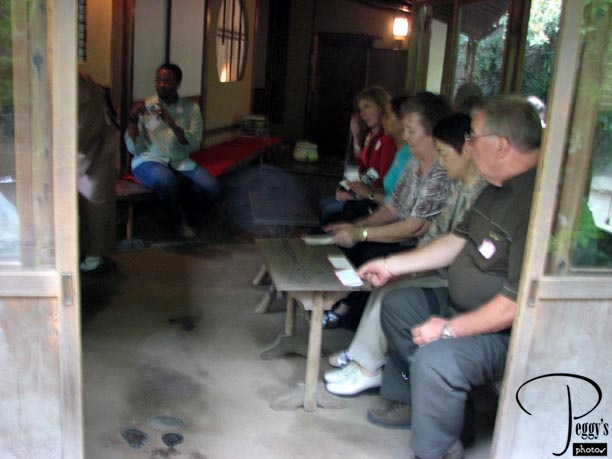
In the tea house. I sat next to the guy on the left. He was a U.S. Navy nurse stationed at Camp Pendelton, California, whose job is to train nurses and doctors who are going to Iraq. He lives in Irvine, California (about 70 miles from LA). He said that we are neighbors but it took a trip to Japan for us to meet––I thought this was funny. I ate lunch with the first three people on the left–––in the middle is the Japanese tour guide for the couple, sitting on either side of her, who are from Yorkshire, England.

Japanese Garden and Tea Ceremony
Japanese Garden and Tea Ceremony
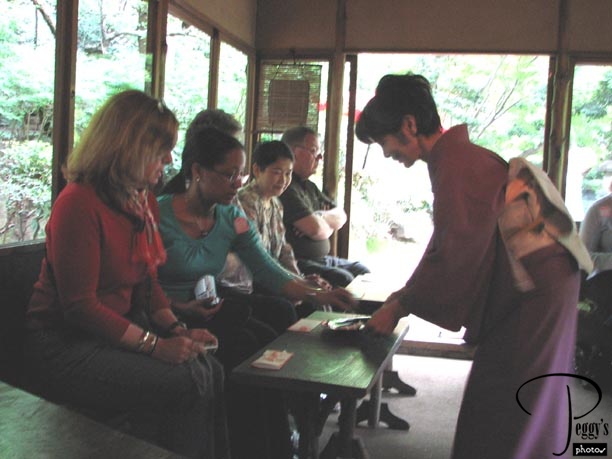
We are being served a candy before our tea. The first two girls in the photo were each traveling alone––one from Maine and one from Atlanta, Georgia.

Japanese Garden and Tea Ceremony
Japanese Garden and Tea Ceremony
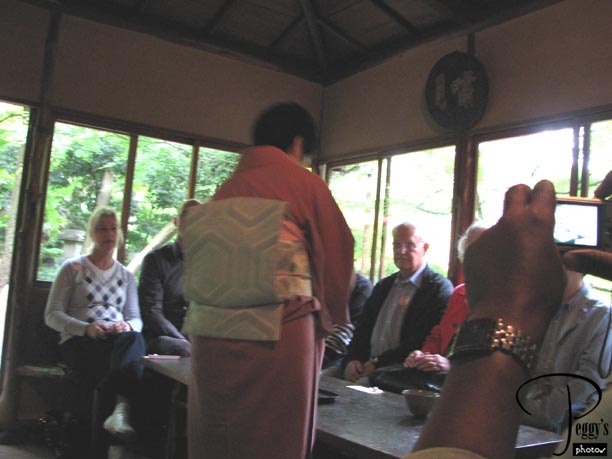
One reason that I was glad to take this tour was that I met Lynn from Sydney, Australia, on it––that is Lynn on the left. We hit it off and mainly hung around together.

Japanese Garden and Tea Ceremony
Japanese Garden and Tea Ceremony
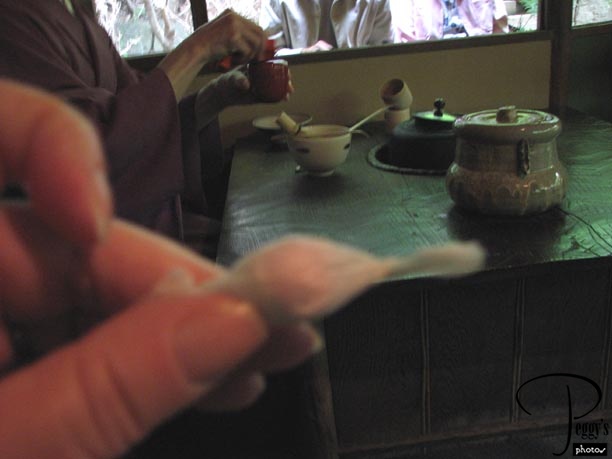
The piece of very sweet candy, given to compensate for the taste of the bitter tea.

Japanese Garden and Tea Ceremony
Japanese Garden and Tea Ceremony
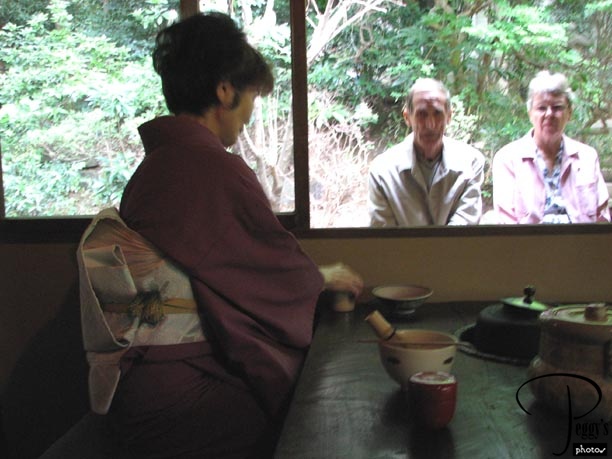
Making of the tea. First, the tea master puts hot water in a bowl and checks its purity. If it isn’t pure, then it is thrown out and new water is poured into the bowl. (I do not know why these two people on our tour group were sitting outside––they were from the Netherlands.)

Japanese Garden and Tea Ceremony
Japanese Garden and Tea Ceremony
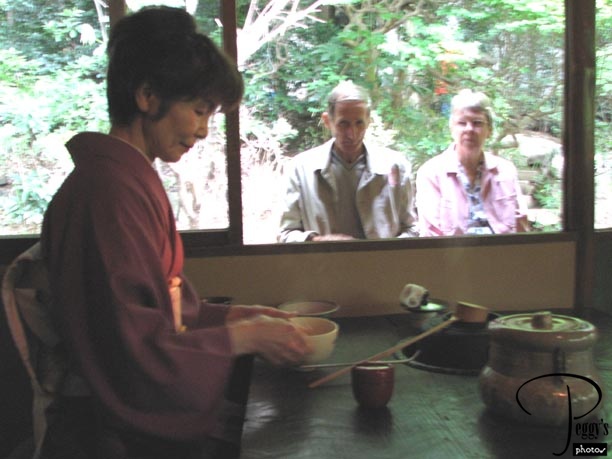
The hot water is in the black jar and cool water is in the gray jar. When the temperature of the water is just right––adding of the cool water to the hot water––powdered green tea is mixed into the bowl.

Japanese Garden and Tea Ceremony
Japanese Garden and Tea Ceremony
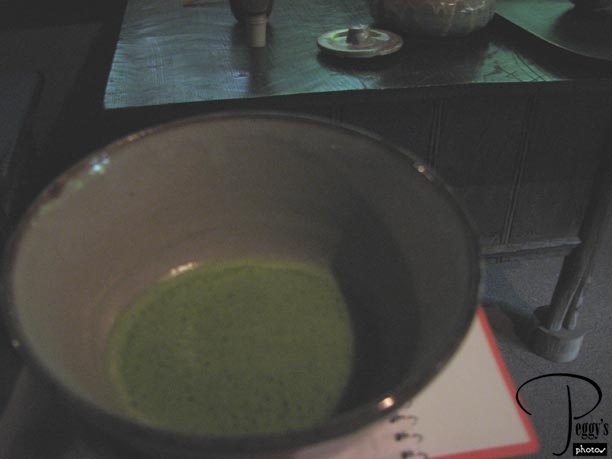
Then we were each served a cup of powdered green tea. When we received our cup of tea (photo), we were to bow to the tea master, then to turn the cup around twice from the cartoon side of the bowl, drink the tea, and then turn the cartoon side around to the tea master to tell her that we were finished drinking the tea. We were to bow again when the cup was taken from us. I never had powdered green tea before––it was thick and slightly bitter. A small tin of powdered green tea was for sale here for 2130 yen. I enjoyed the tea ceremony.

Japanese Garden and Tea Ceremony
Japanese Garden and Tea Ceremony

A Shinto shrine in the Japanese Garden.

Japanese Garden and Tea Ceremony
Japanese Garden and Tea Ceremony
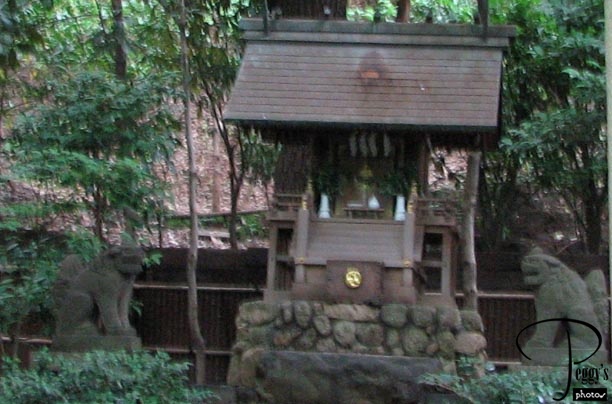
Close–up of the shrine.

Japanese Garden and Tea Ceremony
Chinazanso Restaurant at the Four Seasons Hotel
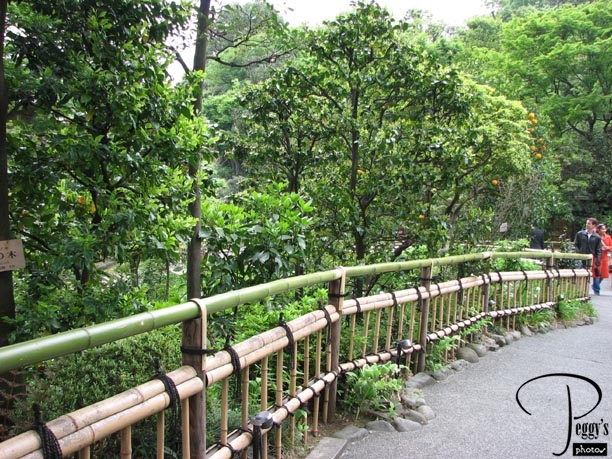
Our next stop was for a barbeque lunch at the Chinazanso Restaurant on the grounds of the Four Seasons Hotel. We had an interesting walk to the restaurant through the hotel’s gardens. Photo: A bamboo fence.

Chinazanso Restaurant at the Four Seasons Hotel
Chinazanso Restaurant at the Four Seasons Hotel
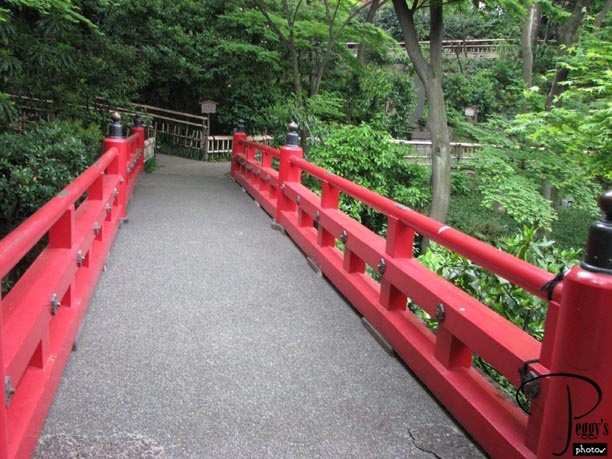
A pretty bridge.

Chinazanso Restaurant at the Four Seasons Hotel
Chinazanso Restaurant at the Four Seasons Hotel
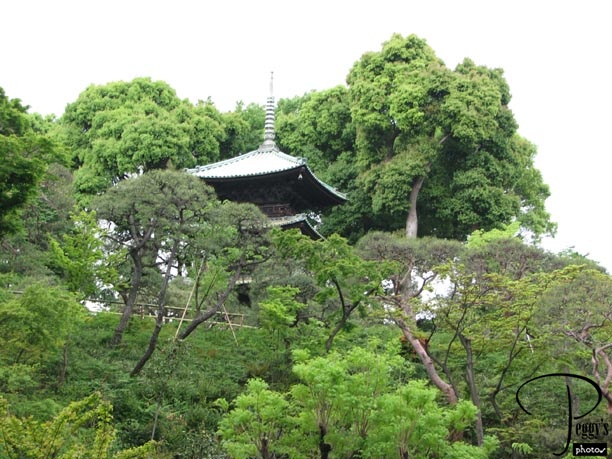
A pagoda.

Chinazanso Restaurant at the Four Seasons Hotel
Chinazanso Restaurant at the Four Seasons Hotel
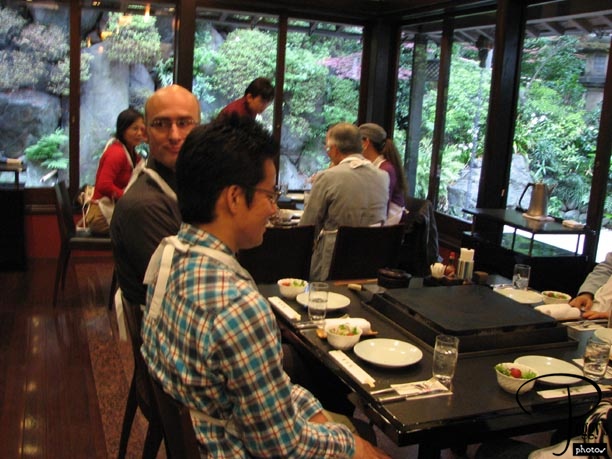
The Chinazanso Restaurant. The young woman sitting at the rear left was quite interesting. She lives in Ho Chin Min City, Vietnam. She came to Japan by herself and she neither speaks Japanese nor much English. But she was doing very well making friends on the tour, sometimes using very good tourist sign language.

Chinazanso Restaurant at the Four Seasons Hotel
Chinazanso Restaurant at the Four Seasons Hotel
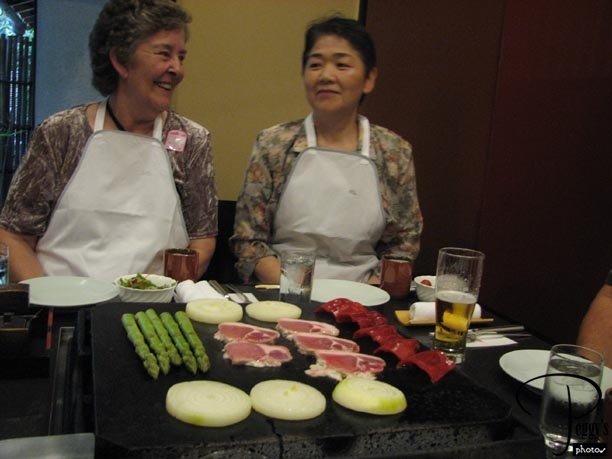
First, bibs were tied on us. Then food was placed, ever so perfectly lined up, on the grill: aparagus, red peppers, onions, pork, and beef. I ate lunch with the couple from Yorkshire, England, their Japanese tour guide, and Lynn.

Chinazanso Restaurant at the Four Seasons Hotel
Chinazanso Restaurant at the Four Seasons Hotel
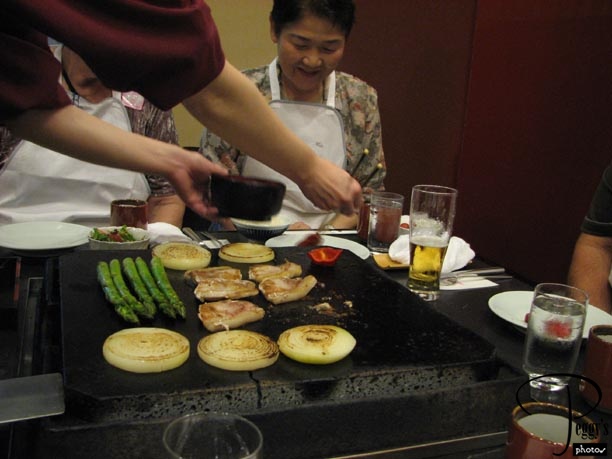
Our server dipped everything in soy sauce before expertly serving each of us. It was a very good, filling meal.

Chinazanso Restaurant at the Four Seasons Hotel
Chinazanso Restaurant at the Four Seasons Hotel
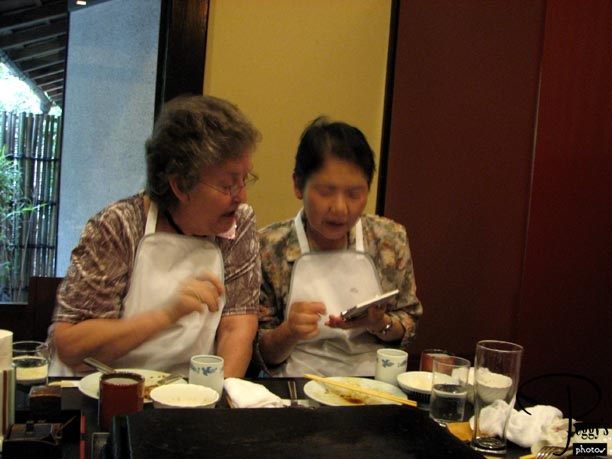
The English couple’s Japanese guide had a translator with her. She was having trouble with English. I think her brother was supposed to do the tour and couldn’t, so she took over. Actually, I was having some trouble understanding the couple’s English accents. I didn’t have much trouble understanding Lynn’s Australian accent. I can imagine how the Japanese must feel trying to understand all of variations of spoken English.

Chinazanso Restaurant at the Four Seasons Hotel
Chinazanso Restaurant at the Four Seasons Hotel
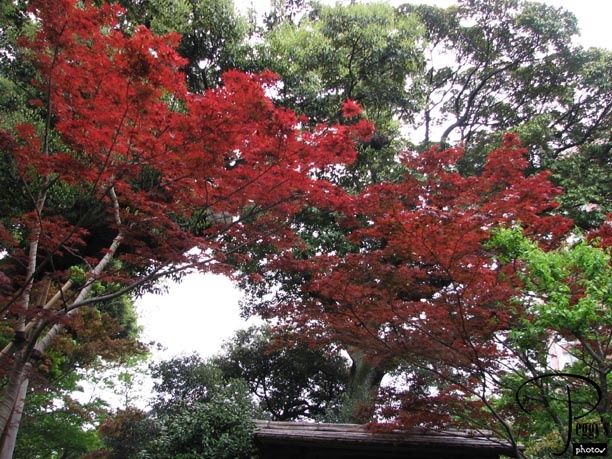
Trees seen on our walk back to the bus. On the walk back, a man from Malaysia asked where I was from––”Where Are You From” is the tourist ice breaker. He was hoping I was from the U.S. as he wanted to tell me that he has a son at M.I.T. in Boston. He said that I should come to Malaysia––the U.S. dollar goes far there. With big tour groups, as this one was, you don’t get to speak to too many people and you tend to gravitate to those who speak your language, but day tours in foreign countries are where the world meets––I guess these tours do promote understanding or at least communication between people from different countries.

Chinazanso Restaurant at the Four Seasons Hotel
Taxi Driver Outside the Four Seasons Hotel

This taxi driver outside the Four Seasons Hotel allowed me to take his photo. Note that Tokyo taxi drivers wear suits and ties. Also, notice the lace doilies on the car seats.

Taxi Driver Outside the Four Seasons Hotel
Imperial Palace Plaza
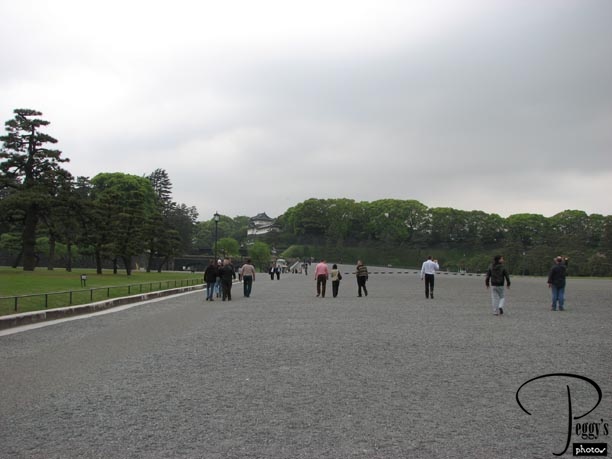
Our next stop was a photo–op at the Imperial Palace Plaza. Photo: We are walking toward our photo–op. We have already walked through a park. Raindrops had starting falling.

Imperial Palace Plaza
Imperial Palace Plaza
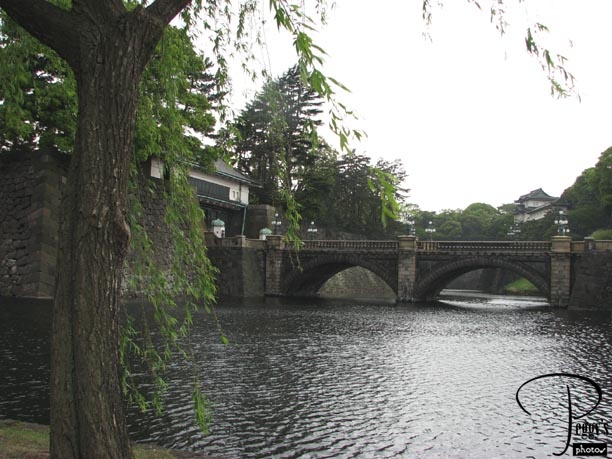
The Nijubashi Bridge to the Imperial Palace. It is a double–arched stone bridge completed in 1888. You can see part of the Imperial Palace on the far right of the photo. We were told that we couldn’t wander off here.

Imperial Palace Plaza
Imperial Palace Plaza
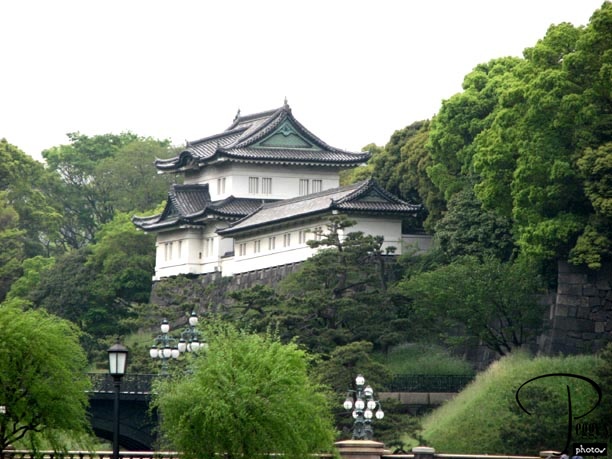
Close–up of part of the Imperial Palace.

Imperial Palace Plaza
Statue
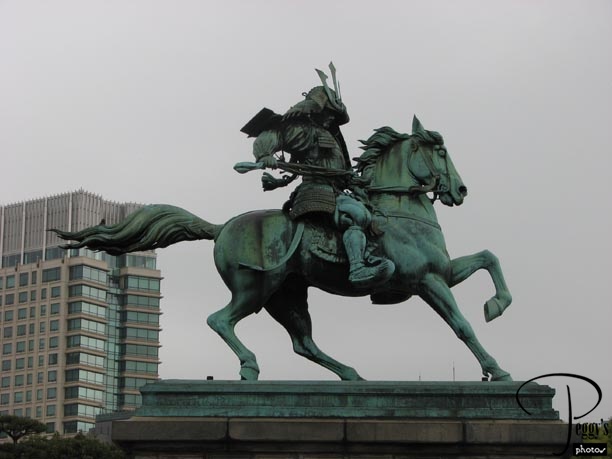
On our walk back through the park to our bus, we passed this statue. I don’t know who it is of, but it is impressive.

Statue
Statue
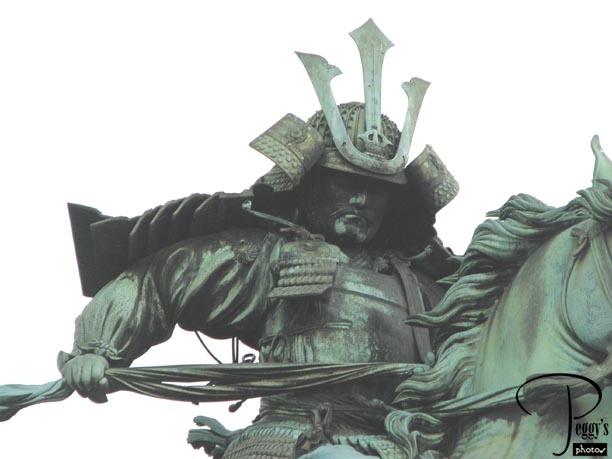
The head of the horseman.

Statue
Statue
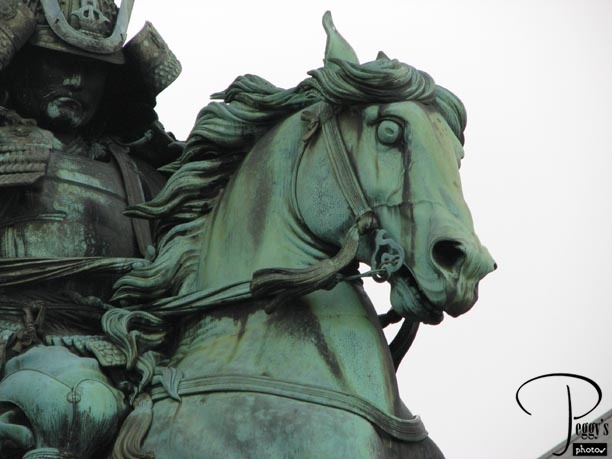
The horse.

Statue
Ginza
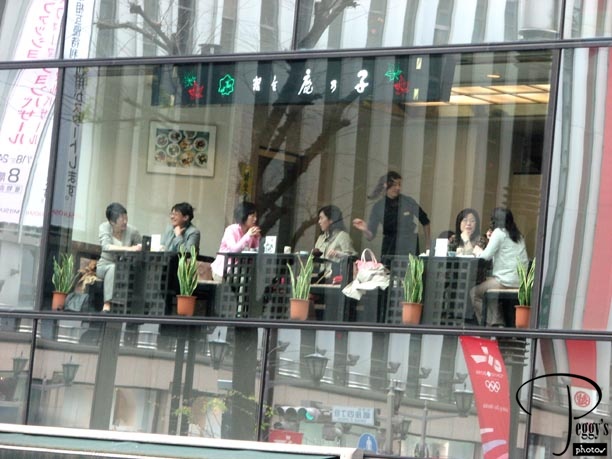
We next drove through Ginza to the river cruise terminal. I caught this photo of Japanese women eating lunch.

Ginza
Sumida River Cruise
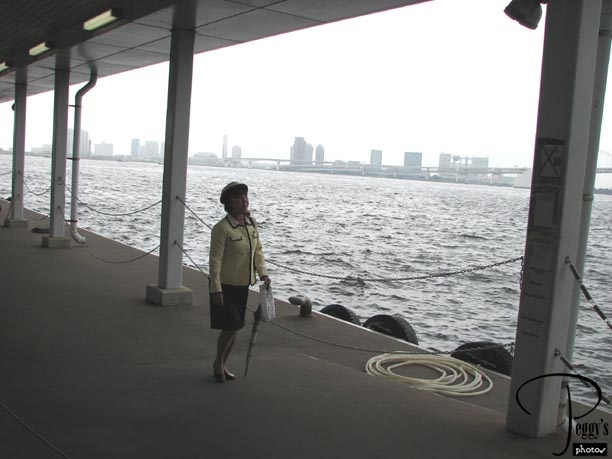
The way to our boat. We were to take a 40–minute Sumida River Cruise to Asakusa. Photo: All the young women guides at various sights were dressed in designer uniforms, complete with hats.

Sumida River Cruise
Sumida River Cruise
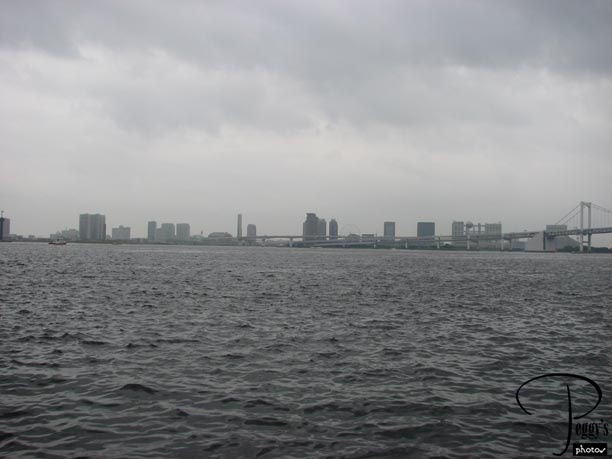
We started our cruise in Tokyo Bay with a view of the island of Odaiba.

Sumida River Cruise
Sumida River Cruise
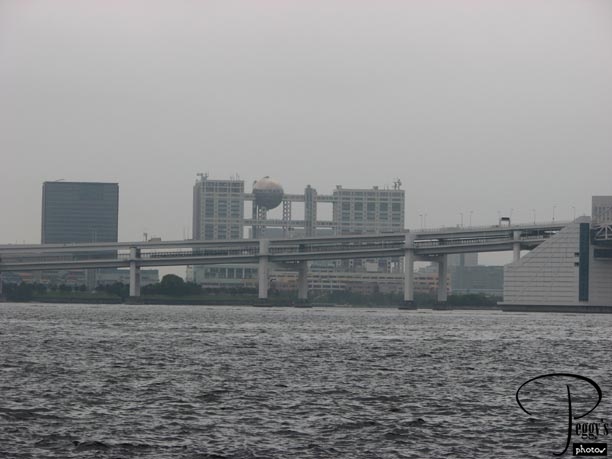
A close–up of the Fuji–TV building on Odaiba.

Sumida River Cruise
Sumida River Cruise
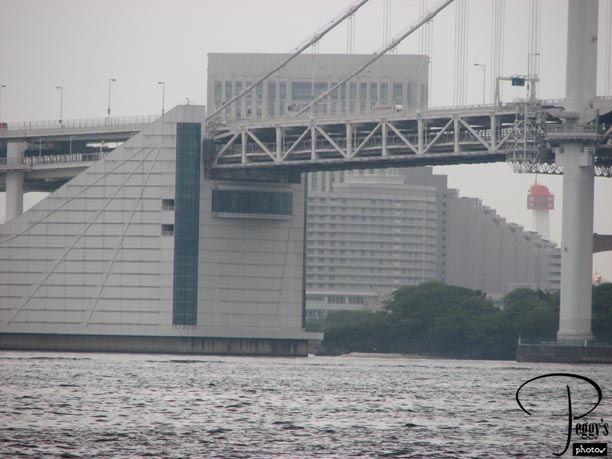
A close–up of our hotel, the Hotel Nikko Toyko, right behind the Rainbow Bridge span. The Sumida River heads north from Tokyo Bay. The boat was crowded so I was only able to take photos of the west side of the river. I have put these photos on a slide show on this website: Go to Slide Shows, Asia, Japan, “Tokyo: Sumida River Cruise.” I didn’t find the cruise to be particulary interesting (that is, many of the buildings along the Sumida River are not that interesting), but it did have its highlights.

Sumida River Cruise
Asakusa
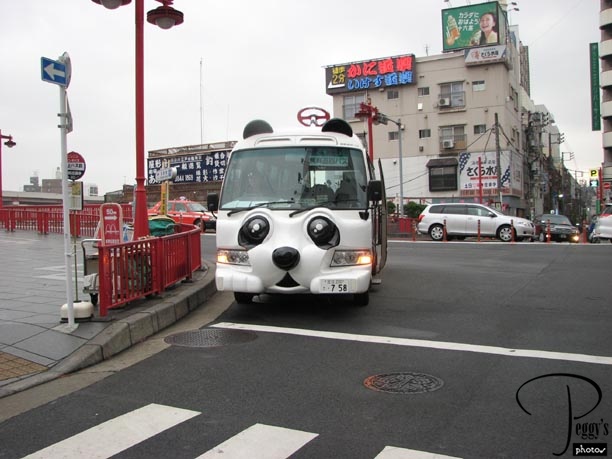
Our cruise ended in Asakusa, near the Asakusa Kannon (Senso–ji) Temple, which I had visited two days ago. Before crossing a busy street, I took this photo of this adorable small Japanese van. Do you think it would sell well in the U.S.?

Asakusa
Asakusa
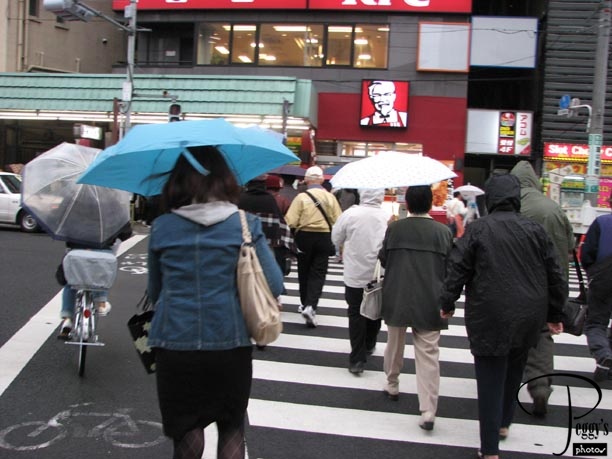
It has started to rain again. The light changed before three of us––the girls from Atlanta and Maine and me––could make it across the street. It was quite a long time before we could cross, so we became separated from our tour group. But we had no fear, the colonel was watching over us.

Asakusa
Asakusa Kannon (Senso-ji) Temple
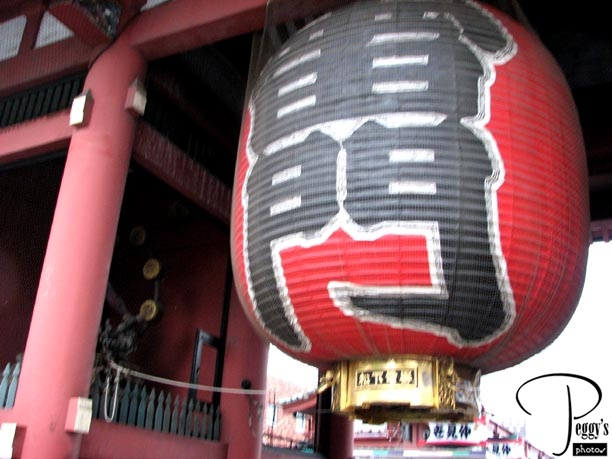
After asking for directions to the temple, we easily found it and our tour guide, Kay, was waiting there for her missing tourists. We entered the temple from the end of the Nakamise Shopping Street, the opposite direction from where we did two days ago.

Asakusa Kannon (Senso-ji) Temple
Nakamise Shopping Street
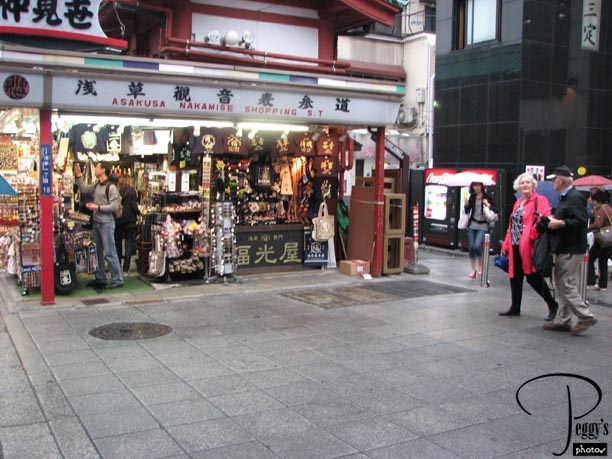
Photo: The beginning of the Nakamise Shopping Street. We were to meet Kay later at the Main Temple, giving us plenty of time to stroll up the street to the temple. I took a number of photos here today and have already put most of them on a slide show on this website: Go to Slide Shows, Asia, Japan, “Japan: Shopping.” Two days ago, on a Sunday, this street was packed with shoppers. Today, Tuesday, on a weekday and with the rain, it was easy and fun to walk around the stores

Nakamise Shopping Street
Nakamise Shopping Street
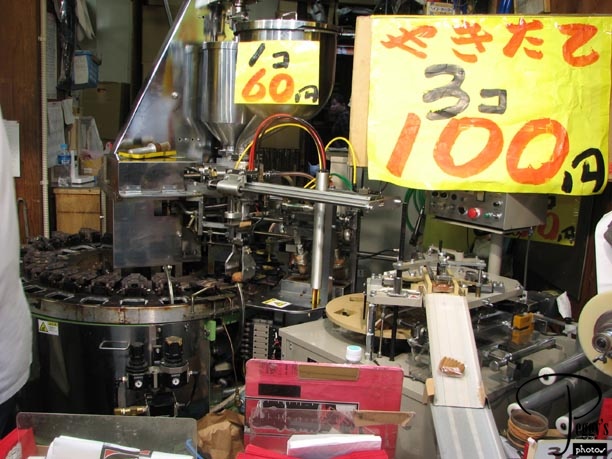
On the Nakamise Shopping Street, candy was being freshly made in this machine––three for 100 yen. I bought three pieces––way too sweet!

Nakamise Shopping Street
Nakamise Shopping Street
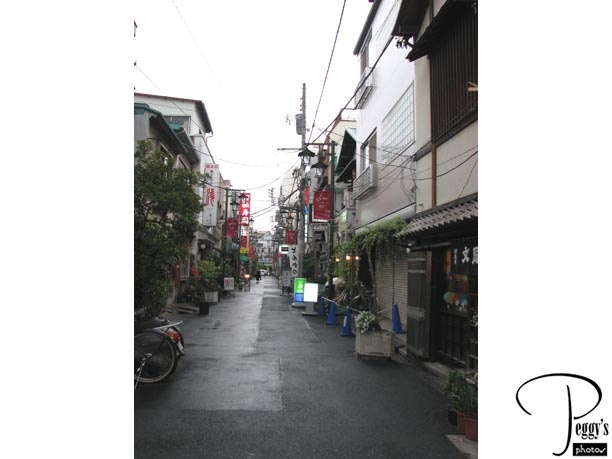
Another shopping street off the main shopping street. It looked deserted.

Nakamise Shopping Street
Nakamise Shopping Street
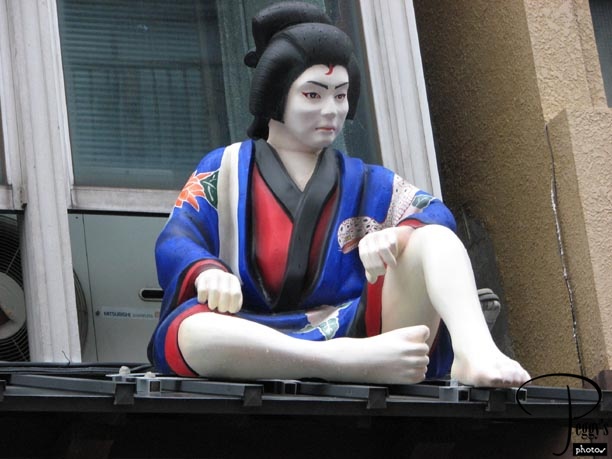
Statue seen above a doorway.

Nakamise Shopping Street
Nakamise Shopping Street
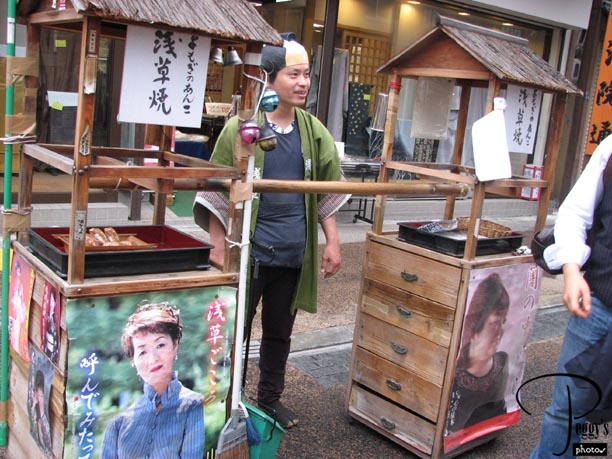
I guess that this vendor carries this contraption on the back of his shoulders.

Nakamise Shopping Street
Nakamise Shopping Street
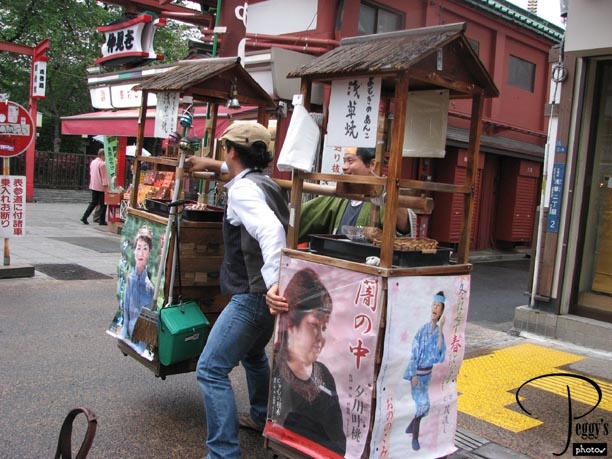
A “tourist” tried to do the same––he did get the two ends off the ground, but only barely.

Nakamise Shopping Street
Nakamise Shopping Street
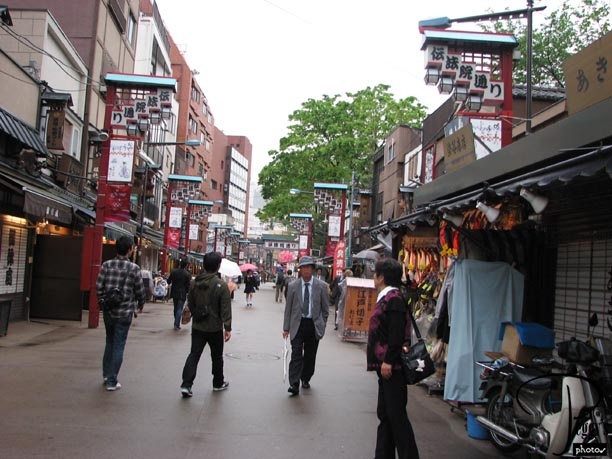
The end of the Nakamise Shopping Street before you get to the temple area.

Nakamise Shopping Street
Asakusa Kannon (Senso-ji) Temple
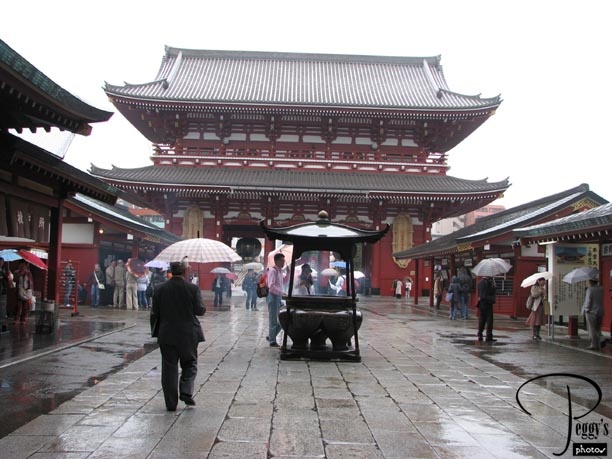
It really started to rain and most of my tour group took cover under the Main Gate––the building in the photo. But we had to meet Kay at the Main Temple and had to brave the rain. Photo of the Main Gate taken from the Main Temple––a shot that I couldn’t have taken last Sunday as there were too many people in this area.

Asakusa Kannon (Senso-ji) Temple
Asakusa Kannon (Senso-ji) Temple
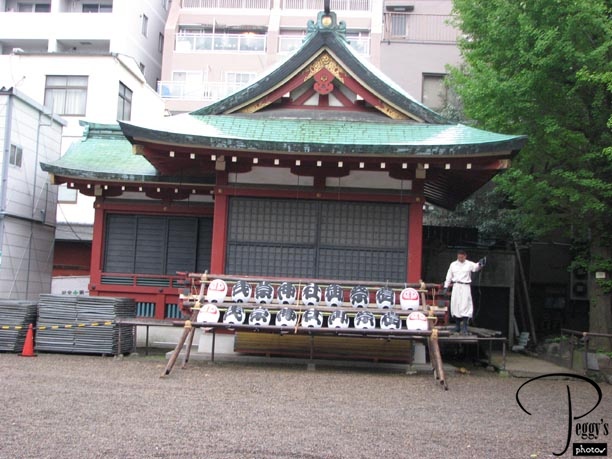
Kay showed us part of the Main Temple (for photos of it, go to Albums, Asia, Japan, “Day 3(B), Tokyo”). Then Kay took us to another area of the temple grounds that I hadn’t seen on Sunday. Photo: A temple building.

Asakusa Kannon (Senso-ji) Temple
Asakusa Kannon (Senso-ji) Temple
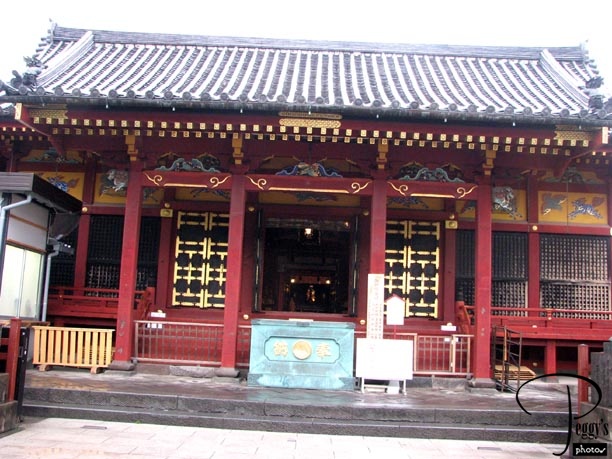
Another temple building.

Asakusa Kannon (Senso-ji) Temple
Asakusa Kannon (Senso-ji) Temple
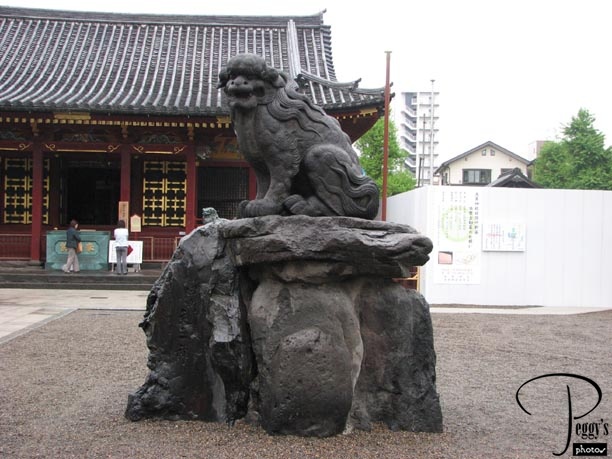
One of two dogs in front of the temple buildings––dogs signify that a temple is Buddhist.

Asakusa Kannon (Senso-ji) Temple
Asakusa Kannon (Senso-ji) Temple
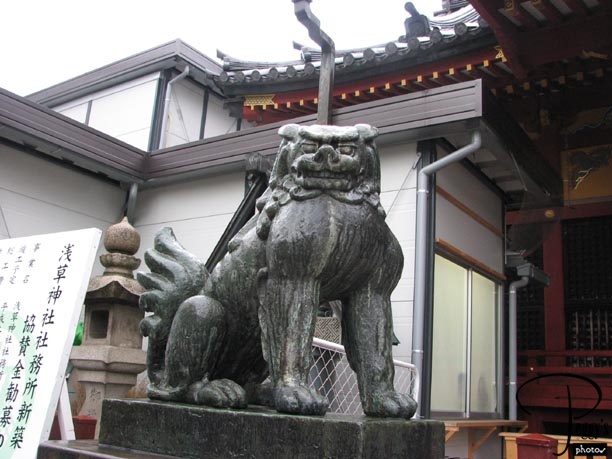
The dog on to left of the temple.

Asakusa Kannon (Senso-ji) Temple
Asakusa Kannon (Senso-ji) Temple
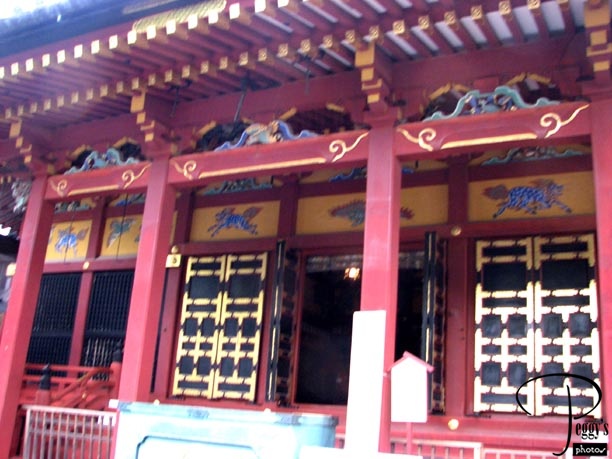
Close–up of the temple building.

Asakusa Kannon (Senso-ji) Temple
Dinner at Aqua City
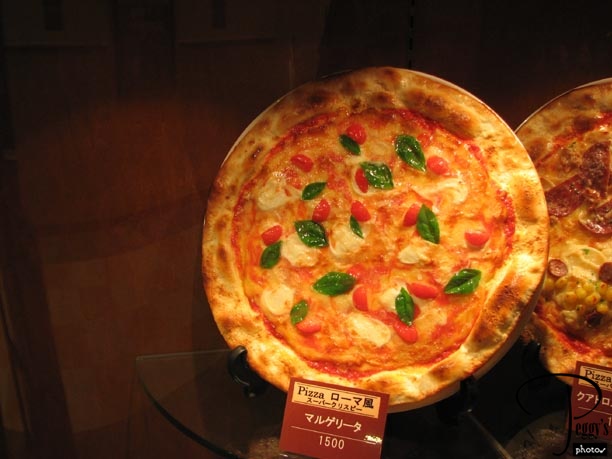
Some of us were now dropped off in Ginza, where I took the subway to Shimbashi Station and then the monorail to Odaiba. I helped the girl from Atlanta to negotiate the Tokyo subway system. It was her first attempt to take the subway––I was already an old pro at taking it, except for getting above ground at Shimbashi Station. It was still raining when I got to my hotel, but I still went out to Aqua City for dinner. I had made up my mind to have pizza for dinner. Photo: I had this margarita pizza at a Japanese pizza parlor––just kidding, it was more or less an Italian restaurant called To the Herbs. The restaurant didn’t serve coke, so I had a peach Italian soda. All of the diners were Japanese. Cost: 1200 yen for the pizza and 530 yen for the soda. The view of lightning over Tokyo Bay was free. But by the time I had finished my dinner, the lightning had stopped but it was still raining with a lot of wind. Anyway, I had another fun, interesting day in Japan, even with the rain.
